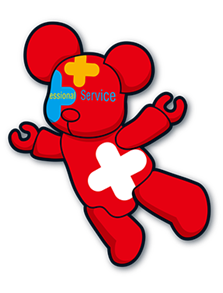Authors (including presenting author) :
Law SW(1)(2), Chau WW(3), Ko SY(1)
Affiliation :
(1) Department of Orthopaedics and Traumatology, Tai Po Hospital (2) Department of Orthopaedics and Traumatology, Alice Ho Miu Ling Nethersole Hospital (3) Department of Orthopaedics and Traumatology, The Chinese University of Hong Kong
Introduction :
With an aging population, geriatric hip fracture will continue to be a major challenge for local health care system in the foreseeable future. Many of these patients are elderly and frail, with complex medical problem and co-morbidities, they have long length of stay (LOS) in rehabilitation to regain function. This result in an increasing demand on hospital beds in near future. Strategies to improve the efficiency for increasing bed capacity are needed to cope with this increasing service demand . Lean and six sigma (LSS )are two quality improvement methodologies that have been adopted in various healthcare setting to improve delivery of care , efficiency of processes . Lean focus on process to eliminate sources of waste and six sigma attempt to minimize variation of care through standardization.
Objectives :
From 2010 to 2018 ,as a continuous quality improving project, LEAN principle was used to identify factor influencing LOS , handover and care pathway was redesigned to improve the process of care in rehabilitation setting. Six sigma approach was then used to evaluate and monitor the effectiveness of clinical pathway .
Methodology :
We continuously measure Physical functional score (EMS and MFAC) and daily activities (MBI) were at admission and discharge over past 8 years . LOS and change of residency was also collected. Effectiveness of program is assessed by Process capability index (Cpk), a statistical measure of process capability to reflect the ability of process (clinical pathway ) to produce output ( LOS ) within specification limits
Result & Outcome :
From 2010 and 2018, 6538 geriatric hip fractures managed with a LSS care pathway in rehabilitation phase. . patients with age between 86 and 95 were increased significantly over the 9 years (p< 0.01). Mean LOS decrease from 24.2 to 18.6 days and from 2010 to 2018. All scores recorded by PT (EMS and MFAC) and OT (MBI) showed significant improvements after in-patient rehabilitation (admission vs. discharge, p< 0.01 in all scores). Over past 8 years ,There were significantly more patients managed discharge home (2011 vs. 2018 = 57.8% vs. 68.9%), instead of returning to institution from institution (2011 vs. 2018 = 25.2% vs. 10.7%), (All: p< 0.01). Cpk values were increasing (improving) over past 8 years, Following the implementation of Lean Six sigma framework , the outcome of geriatric hip fractures has improved , as reflected by statistically significant improvement in function , and there is improvement in bed capacity as reflected by decreasing LOS through the process .








